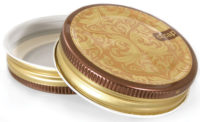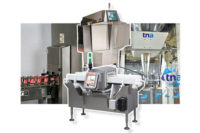The flexible packaging market is still expanding and growing each year. A report from Transparency Market Research (transparencymarketresearch.com) about the flexible packaging market states that the global demand for flexible packaging was valued at USD 73.56 billion in 2012 and is expected to reach USD 99.10 billion in 2019. Millennials, in particular, have taken a liking to the segment, since they are one of the first groups to grow up with pouches, with childhood favorites like Capri Sun juice drinks.
“Millennials have been key adopters of flexible packaging. A generation motivated by convenience and open to new, more usable forms of packaging, the millennials are adopting flexible packaging across a wide variety of products from dog treats to liquid sports gels. In addition, a report from Barkley, based on research conducted as part of a joint partnership with Service Management Group, The Boston Consulting Group and Barkley, identified that 55 percent of Millennials are responsive to marketing efforts that support a cause. The potential for environmental impact reduction offered by flexible packaging is therefore an attractive platform to optimize product attractiveness to this increasingly powerful demographic,” says Ian Lemon, Essentra’s global category manager for healthcare & personal care.
The flexible packaging market is vast and spreads across several industries including processing and packaging of pharmaceuticals, personal care products, household items and food and beverages. Flexible packaging has boomed in almost every segment imaginable, and more unique opportunities are around the corner.
“With the increased and global focus on environmental responsibility, flexible packaging formats can be observed in a vast number of product verticals from paint to pharmaceuticals and beauty products. Whilst the food market dominates the usage volume of flexible packaging, brand owners in all categories are exploring the functional and environmental benefits that this format may offer. The refill opportunity is an area being explored by many companies as they strive to reduce the ecological impact of their products, whilst marketers deploy single-use applications to deliver accessible price points for consumers to access their brands in lower-income regions,” continues Lemon.
New and award-winning
On display at PACK EXPO Las Vegas only a few weeks ago, the Medi-CRREO™ Child Resistant Pouch has garnered a lot of attention. Child safety is so important, and now more than ever, the topic is at the top of our minds with new packaging solutions aimed at keeping kiddie hands out.
The pouch, from Pactech Packaging (pactechpackaging.com), features the CHILD-GUARD™ child-resistant slider from Presto
Products Company (fresh-lock.com). The slider based closure has passed the testing requirements set forth from the Poison Prevention Packaging Act. Potential markets for the Medi-CRREO Child Resistant Pouch include food & consumer products, as well as prescription medication, agricultural products and household chemical products.
Produced in a variety of sizes from 5x5 inches to 18x18 inches with and without a standup gusset, the size of the package is scalable to the size desired by the end user. Compared to rigid packaging types like prescription bottles or blister packaging, the pouch offers increased graphic billboarding for better marketing.
First introduced in 1994, Pactech’s Medi-CRREO Pouch represented the first patented flexible and reclosable child-resistant pouch packaging. More than 20 years later, the company saw an opportunity to further evolve the reclosable feature and improve consumer engagement with the package. The Pactech team approached Presto for a solution: the CHILD-GUARD child-resistant slider.
Earlier this year, the pouch was recognized as a Gold Winner in the 2015 DuPont Awards for Packaging Innovation. It also received a Gold Award for Technical Innovation from the Flexible Packaging Association.
Another pouch innovation was revealed at PACK EXPO this fall. At the show, Amcor (amcor.com) showcased AmLite, its latest innovation in metal-free packaging technology. AmLite utilizes a lightweight, transparent material that offers excellent product protection, a strong seal and improved packaging appearance. Since the package is metal-free, customers can use metal detection after the packs are filled and sealed, for added product protection and safety.
“Brand owners can now easily choose transparent packaging, even for sensitive products,” says Marco Hilty, VP Strategy and R&D for Amcor Flexibles Europe and Americas. “Packaging that shows the product inside increases consumer trust and the likelihood of purchase. For sensitive products however, this was typically not a practical option, and they were hidden behind aluminum-based or metallized packaging. AmLite gives packaging designers and marketing teams a cost competitive alternative.”
AmLite is lightweight while maintaining barrier levels approaching that of aluminum. In addition to being transparent and strong, it is also environmentally friendly. In a lifecycle assessment, AmLite provided a 40% carbon footprint reduction and 21% weight reduction compared to standard Alu-based materials.
AmLite can be used for a range of ambient wet and dry food products, as well as medical and personal care products like powders and lotions.
Want more flexible packaging?
Hear about collaboration, growing markets at Global Pouch West
By: Joyce Routson, Conference Director
There is plenty to say about flexible packaging—the fastest-growing of all packaging types. So, for the second year in a row, Packaging Strategies is holding a conference highlighting trends and market opportunities within plastic bags and pouches. Global Pouch West will take place December 2-3 in southern California in Garden Grove. This year’s program aims to hit on some of the issues near and dear to suppliers and their end-users, namely collaboration, competition and recycling.
Keynote speaker Joel Henry is the founder of Fig Food Co., a purveyor of organic packaged soups and beans. The company started in 2009 as an entrant in New York City’s first business incubator under the Bloomberg administration. Since then, it has expanded to more than $2 million in sales and is in Whole Foods and other markets nationwide. But this wasn’t Henry’s first job. He spent a number of years at Campbell Soup Co. where he held strategic planning roles. He also worked at Kraft Foods, Warner-Lambert and Diageo in other leadership positions.
Henry will talk about his experience as an entrepreneur and what the packaging industry can do to help support start-ups. Much of the packaging supply chain is geared toward the “big guys” despite the fact that smaller, nimble food and beverage companies have seized market share as consumers shift away from processed foods.
From the supplier side, an executive with one of the world’s largest flexible packaging companies will share his thoughts on the future of this very fragmented industry—in the U.S. there are more than 400. George Thibeault, senior VP of North American sales for Constantia Flexibles, will talk about how the $27 billion U.S. flexible packaging industry is faring against fast-rising companies in Asia and Europe. Constantia has about 2% of the global market in a landscape dominated by Amcor (9%), Bemis (6%), Sealed Air (4%) and Dai Nippon Printing and Printpack (each 2%), according to PCI Films Consulting Ltd.
Several sessions will deal with various ways packaging can communicate—through design, color and feel. Miriam Walsh Lisco has designed packaging for cheese, to chocolate, to coconut oil. “Our goal is not only to provide our clients with great packaging but to give them the tools to excite the food buyers,” she says.
Margaret Angelovich, western sales manager for Zip-Pak, will talk about engaging the senses for brand distinction—how consumer product goods makers are incorporating texture, sound, taste and feel into their packaging to differentiate it from the competition.
Microwave assisted thermal sterilization (MATS) is a dramatically different way of processing food and offers significant advantages over other legacy technologies - such as nutrient and color retention and better texture. Attendees will learn how MATS works from the exclusive supplier, 915 Labs, and how they can adapt it for a wide array of potential uses.
No discussion of flexible packaging would be complete without a look at end-of-life options. While flexible packaging has many attributes, its multilayered structure makes it difficult to recycle; and at sorting facilities, its light weight can clog up machinery. However, there are options beyond the landfill for pouches, and this panel with talk about them. It will be moderated by Terence Cooper, a consultant with 46 years’ experience in polymer-related manufacturing. He spent a number of years with chemical companies DuPont and Arco before founding Argo Group.
There is much more on the agenda at Global Pouch West (globalpouchwest.com). Go to the website for more details, including the who, what, where and how to register.
Market Insight: Key trends driving flexible packaging
Submitted by: Smithers Pira
The global market for flexible packaging is forecast to grow at an annual average rate of 3.4% over the next five years, and is expected to reach $248 billion by 2020. This dynamic packaging sector offers huge potential for technology suppliers, packaging converters and brand owners.
Flexible packaging is the most economical method to package, preserve and distribute food, beverages, other consumables, pharmaceuticals and other products that need extended shelf life. It can be designed with barrier properties tailored to fit the products being packaged and their end-uses, whereas other barrier packaging formats generally provide a one-size-fits-all approach. Flexible packaging can now be made in a wide variety of innovative shapes, sizes and appearances, and can include components, such as handles; and opening and reclosing features, such as zips and spouts.
Smithers Pira draws on its most recent market data to identify the four key trends which are driving the market for flexible packaging:
1. Downgauging
Flexible packaging uses less resources and energy than other forms of packaging. It provides significant reductions in packaging costs, materials use and transport costs as well as certain performance advantages over rigid packaging. Use of flexible packaging can minimize package transport costs between the converter, packer/filler, retailer and end user. It not only takes up less space when empty than rigid packaging, but can also be constructed on the spot from roll materials at the filling location, thereby minimizing transportation of ready-formed empty packaging.
A key trend for flexible plastic packaging is continued downgauging as the combination of environmental pressures and high polymer prices make customers demand even thinner films.
This downgauging of plastic films will continue even though many of the traditional films are reaching the limits of this trend. The flexible packaging industry will begin to promote more of the ‘pre-cycling’ benefits of these packages versus rigids as the combination of environmental pressures and uncertain polymer prices persist. No declines for paper and aluminum foil are forecast as demand for them reached the bottom line in many regions.
2. Bio-derived and bio-degradable technologies
In the past few years, a number of new product launches involving bio-based plastic packaging have taken place. The proliferation of bio-based plastic films continues with polylactic acid (PLA), polyhydroxyalkanoates (PHA) and poly-trimethylene terephthalate (PTMT) showing the most promise on the truly materials side of the equation, and thermoplastic starch (TPS) films on the petroleum replacement side.
Brazil’s Braschem Green PE has made large strides on the latter, with much of the PE consumed in Brazil coming from locally grown sugar cane raw materials. Braschem is having some success outside of its own region as well, with the large US-based bakery Bimbo Bakeries USA recently switching its Eureka! Organic Bread bags from petroleum based PE to Braschem’s sugarcane based materials. While these bags are only 36% bio-based, this represents a significant change, especially in a package that is usually considered very low cost.
Emerald Packaging, a US–based flexible packaging converter, has launched a bag for potatoes that is manufactured partly from potato starch. The film is 25% potato starch resin and 75% low-density polyethylene mixture. Emerald claims that the film is stronger than 100% low-density polyethylene (LDPE) film.
Find out what the other two trends in this segment are by going to: packagingstrategies.com/FourFlexiblePackagingTrends
This research is based on Smithers Pira’s (smitherspira.com) report, The Future of Global Flexible Packaging to 2020.









